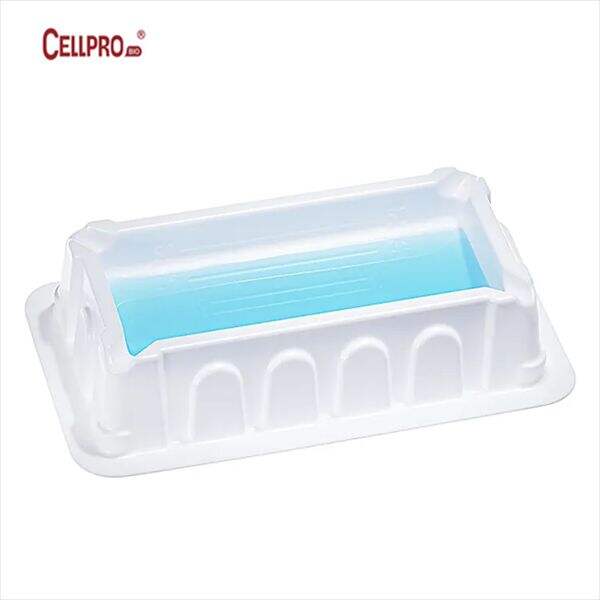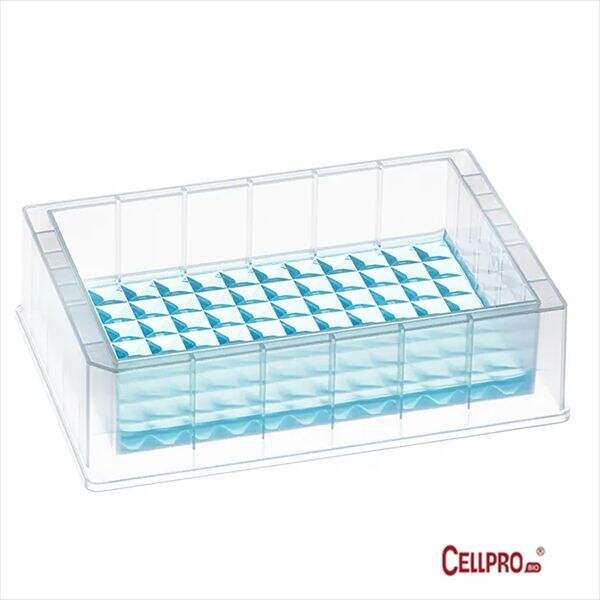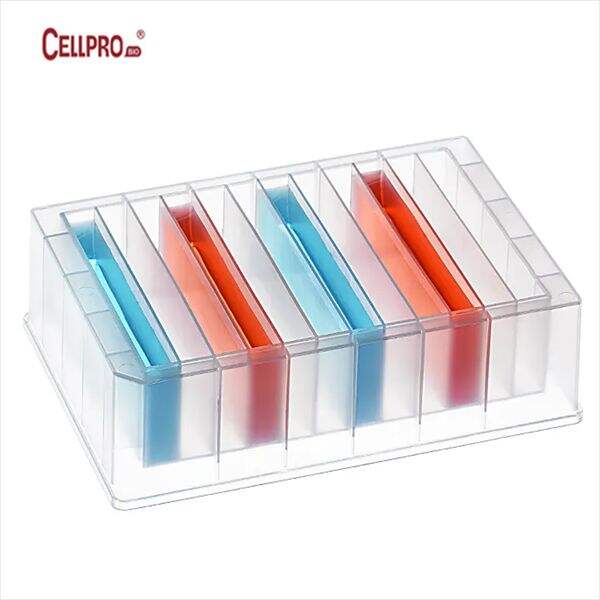ในห้องปฏิบัติการทางวิทยาศาสตร์ มีภาชนะสำหรับเก็บสารละลายที่ถูกนำมาใช้งานร่วมกับ pipette หลายช่องอย่างแม่นยำ มีประสิทธิภาพและความปลอดภัย อย่างไรก็ตาม การใช้งานหลอดเหล่านี้ซึ่งมีความยืดหยุ่น ช่วยเพิ่มประสิทธิภาพของการทำงานและการดำเนินการ pipetting อย่างมาก ส่งผลให้เราเข้าสู่เนื้อหาครึ่งหลังของบทความนี้ - ว่าทำไมภาชนะสำหรับเก็บสารละลายจึงนำไปสู่ความสำเร็จทางวิทยาศาสตร์หลากหลาย
ในการทำงานทางวิทยาศาสตร์คุณจำเป็นต้องมีการวัดที่ละเอียดอ่อน ภาชนะบรรจุสารเคมีทั้งหมดที่สร้างขึ้นจะช่วยให้มั่นใจได้ว่ามีรูปร่างเหมือนกระถางทรายเพื่อช่วยให้บรรลุระดับนี้ พวกมันให้ฐานที่แข็งแรงเพื่อลดการกระเซ็นของของเหลวในระหว่างการดูดซึมและลดการเกิดฟองที่เป็นสาเหตุของการไม่ถูกต้อง นอกจากนี้ การรักษาความระดับของของเหลวในบ่อน้ำให้เท่ากันในทุกช่องจะทำให้เกิดความสม่ำเสมอ ซึ่งเป็นข้อกำหนดสำคัญสำหรับความแม่นยำ อีกทั้งการใช้วัสดุที่มีความเหนียวต่ำช่วยให้ปล่อยของเหลวออกมากขึ้นภายในบ่อน้ำเพื่อการพิสูจน์ที่แม่นยำยิ่งขึ้น

ดีไซน์นี้เหมาะสำหรับการใช้งานที่ต้องการการดูดของเหลวผ่านท่อหลายช่อง ถังเก็บเหล่านี้มีสเกลบอกปริมาตรช่วยให้การวัดง่ายขึ้น และสามารถวางซ้อนกันบนโต๊ะทำงานเพื่อประหยัดพื้นที่ รองรับภาชนะขนาดเล็กสำหรับท่อดูดและเพิ่มความยืดหยุ่นในการจัดเก็บ นอกจากนี้ ในระดับที่สูงขึ้น ถังเก็บอาจมีฟิลเตอร์หรือกำแพงไฮโดรโฟบิกป้องกันการเกิดละอองลอยในอากาศ ซึ่งจะช่วยปกป้องตัวอย่างไม่ให้ปนเปื้อนและรักษาความปลอดภัยของผู้ปฏิบัติงาน การเลือกถังเก็บที่เหมาะสมสำหรับชุดท่อดูดแต่ละประเภทจะช่วยควบคุมการดูดได้อย่างเชี่ยวชาญ ลดความเหนื่อยล้าของผู้ปฏิบัติงาน และปรับปรุงผลลัพธ์

การป้องกันการปนเปื้อนข้าม การปนเปื้อนข้ามเป็นความกังวลสำคัญในห้องปฏิบัติการทุกแห่ง ไม่ต้องสงสัยเลย นอกจากนี้รูปร่างของ Reagent Reservoir ยังทำหน้าที่เป็นเกราะป้องกันเพิ่มเติมจากการปนเปื้อนด้วยฟิลเตอร์ที่ติดมาในตัว อุปกรณ์จัดเก็บแบบมีผนังทึบแสงช่วยให้คุณทำงานได้อย่างเงียบๆ โดยไม่มีการปนเปื้อนข้ามระหว่างตัวอย่างในกระบวนการใช้ท่อพิสูจน์ เนื่องจากแต่ละหลุมถือเป็นสภาพแวดล้อมที่แยกออกจากกัน การประยุกต์ใช้นี้มีความสำคัญอย่างยิ่งในงานทดสอบที่ละเอียดอ่อน เช่น PCR หรืองานวัฒนธรรมเซลล์ เพราะแม้การปนเปื้อนเล็กน้อยก็สามารถทำลายผลลัพธ์ได้ นอกจากนี้ การใช้ภาชนะสำรองแบบใช้แล้วทิ้งยังเพิ่มความปลอดภัยอีกระดับหนึ่ง ซึ่งช่วยให้การใช้งานและการกำจัดสะดวก และไม่ให้การปนเปื้อนแพร่กระจาย

กรณีที่เลวร้ายที่สุด อาจหมายถึงการสร้างอ่างเก็บรีагентแยกกันสำหรับห้องปฏิบัติการของคุณในสถานการณ์การดูดสารน้ำหลายแบบ อ็อปชั่นหลากหลายสามารถหาได้ตั้งแต่อ่างเก็บพอลิโพรพิลีนพื้นฐานสำหรับการจัดการของเหลวปกติไปจนถึงการออกแบบเฉพาะสำหรับการถ่ายโอนปริมาณต่ำและการตรวจจับความเร็วสูง บทความนี้แนะนำให้เลือกรีагентตามประเภท: เช่น เหมาะสมกว่าที่จะใช้อ่างเก็บที่มีการยึดเกาะต่ำสำหรับตัวทำละลายที่ระเหยง่ายหรือมีราคาแพง เพื่อให้สูญเสียของเหลวน้อยที่สุดเนื่องจากการยึดติด (ส่วนหลังเพิ่มเติมในวงเล็บ) อ่างเก็บแบบลึกออกแบบมาสำหรับการถ่ายโอนปริมาณมากระหว่างการเติมซ้ำ ซึ่งขยายเวลาจนกว่าคุณจะต้องเติมน้ำ ทำให้การใช้งานยาวนานขึ้นสำหรับโอกาสต่าง ๆ เมื่อรู้แน่ชัดว่าแต่ละแอปพลิเคชันต้องการอะไร นักวิจัยสามารถเลือกอ่างเก็บที่เหมาะสมที่สุดสำหรับกระบวนการทำงานเฉพาะของพวกเขา
ศูนย์วิจัยและพัฒนาการหล่อแบบแม่นยำสูงที่สามารถจัดการกระบวนการสร้างผลิตภัณฑ์ทั้งหมด การออกแบบและการผลิตแม่พิมพ์ การปรับแต่งกระบวนการหล่อพลาสติกสำหรับภาชนะเก็บสารหลายช่อง การตรวจสอบทางชีวภาพ การผลิตเชิงขนาด และบริการอื่น ๆ
ผลิตภัณฑ์เป็นอุปกรณ์เก็บสารละลายสำหรับท่อส่งของเหลวหลายช่อง ได้รับการรับรองตามระบบการจัดการคุณภาพ ISO13485, ISO9001, ISO14001 และยังผ่านมาตรฐาน CE และ FDA อีกด้วย
ห้องปฏิบัติการมืออาชีพ เช่น ห้องปฏิบัติการเพาะเลี้ยงเซลล์ ห้องปฏิบัติการจุลชีววิทยา ห้องทดลองสำหรับตรวจสอบท่อส่งของเหลวหลายช่อง เป็นต้น ซึ่งสามารถดำเนินการทดสอบทางชีววิทยาแบบครบวงจรและการสร้างสรรค์เครื่องมือ เครื่องแก้ว และสารเคมี
อุปกรณ์ที่ทันสมัยและวัสดุดิบที่มีคุณภาพสูงช่วยให้มั่นใจในความน่าเชื่อถือของคุณภาพ CellPro มีสายการผลิตอัตโนมัติมากกว่า 100 สายสำหรับอุปกรณ์เก็บสารละลายสำหรับท่อส่งของเหลวหลายช่อง เครื่องฉีดพลาสติกนำเข้าจากแบรนด์ FANUC, ARBURG, ENGEL, TOYO ช่วยรับประกันการผลิตและความจุ
ตัวอย่างเช่น คุณอาจต้องพิจารณาถึงความเข้ากันได้ของหลอดดูดที่ใช้งานอยู่ หรือว่าปริมาตรอยู่ในช่วงเฉพาะหรือไม่ เมื่อเลือกใช้ภาชนะสำหรับสารละลาย ตรวจสอบให้แน่ใจว่าภาชนะนั้นเข้ากันได้กับประเภทหลอดดูดของคุณ (ช่องทาง/ปริมาตร) สิ่งนี้มักใช้ในวัสดุที่มีการยึดเกาะต่ำ และในกรณีที่สารเหลวเหนียวไหลหรือต้องการความแม่นยำในระดับเล็กๆ ก่อนที่จะจัดเตรียมห้องปฏิบัติการ พิจารณาถึงค่าใช้จ่ายระหว่างภาชนะแบบใช้แล้วทิ้งกับแบบนำกลับมาใช้ใหม่และความเสี่ยงของการปนเปื้อน ตรวจสอบขอบที่ป้องกันการหก การยึดติดและการซ้อนกันได้ หรือความเหมาะสมในการปรับตำแหน่งภาชนะ นอกจากนี้ ข้อกำหนดมาตรฐานของอุตสาหกรรมควรถูกนำมาใช้ในทุกระดับของการวางแผนตั้งแต่ต้น แม้ว่าจะไม่มีข้อจำกัดจากคำแนะนำตามชนิดของสิ่งมีชีวิต/สิ่งมีชีวิต เช่น เป็นแหล่งสำคัญสำหรับผลิตภัณฑ์กระดาษ (ตามที่แสดงในตารางที่ 1) การแบ่งลำดับความสำคัญอาจเสนอแนะว่า เช่น วัสดุที่ได้รับการรับรอง > ไม่มีพิษต่อเซลล์และไม่มีพิโรเจน การรับรองดังกล่าวอาจต้องการให้เลือกวัสดุที่ได้รับการรับรองว่าไม่มีพิษต่อเซลล์/ไม่มีพิโรเจนมากกว่าวัสดุทั่วไป โดยเฉพาะอย่างยิ่งเมื่อทำงานเกี่ยวกับการเพาะเลี้ยงเซลล์/การทดสอบทางชีวภาพ
สรุปได้ว่า ภาชนะสำหรับเก็บสารละลายไม่ใช่เพียงแค่อุปกรณ์ทั่วไป แต่เป็นอุปกรณ์ในการต่อสู้ภาคพื้นดิน - ลดความเสี่ยงจากข้อผิดพลาดและเพิ่มประสิทธิภาพในการทำงาน โดยยังคงรักษาความปลอดภัยไว้อย่างแน่นอน การทดลองทางวิทยาศาสตร์ใด ๆ ที่ใช้กระบวนการ pipetting หลายช่อง จะต้องมีองค์ประกอบนี้เสมอ โดยการเชื่อมโยงการทำงานของภาชนะเหล่านี้ในแบบต่าง ๆ ทำให้นักวิจัยสามารถเลือกใช้งานภาชนะที่เหมาะสมกับงานที่กำลังทำ และมั่นใจได้ว่าทุกครั้งที่ใช้ multi-channel pipette จะช่วยสนับสนุนอย่างมีนัยสำคัญ